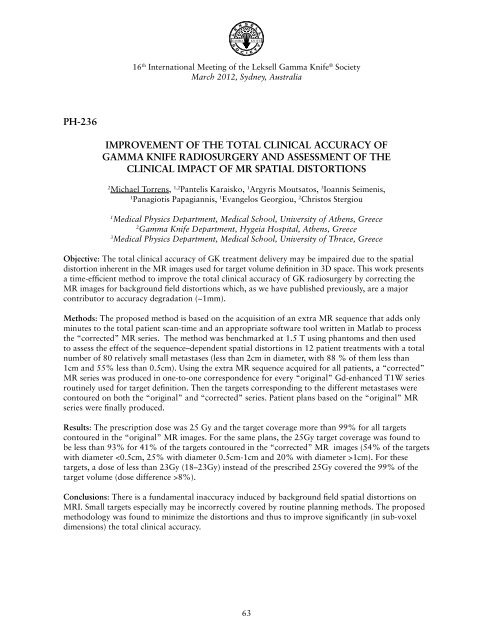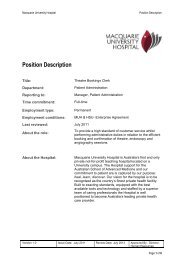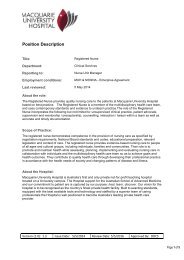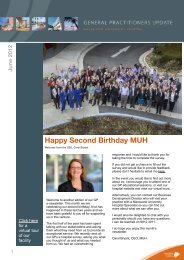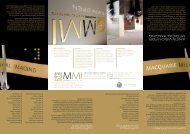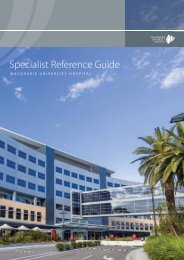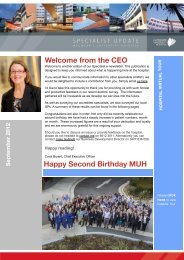Plenary Oral Presentations - Macquarie University Hospital
Plenary Oral Presentations - Macquarie University Hospital
Plenary Oral Presentations - Macquarie University Hospital
Create successful ePaper yourself
Turn your PDF publications into a flip-book with our unique Google optimized e-Paper software.
16 th International Meeting of the Leksell Gamma Knife ® SocietyMarch 2012, Sydney, AustraliaPH-236Improvement of the total clinical accuracy ofgamma knife radiosurgery and assessment of theclinical impact of MR spatial distortions2Michael Torrens, 1,2 Pantelis Karaisko, 1 Argyris Moutsatos, 3 Ioannis Seimenis,1Panagiotis Papagiannis, 1 Evangelos Georgiou, 2 Christos Stergiou1Medical Physics Department, Medical School, <strong>University</strong> of Athens, Greece2Gamma Knife Department, Hygeia <strong>Hospital</strong>, Athens, Greece3Medical Physics Department, Medical School, <strong>University</strong> of Thrace, GreeceObjective: The total clinical accuracy of GK treatment delivery may be impaired due to the spatialdistortion inherent in the MR images used for target volume definition in 3D space. This work presentsa time-efficient method to improve the total clinical accuracy of GK radiosurgery by correcting theMR images for background field distortions which, as we have published previously, are a majorcontributor to accuracy degradation (~1mm).Methods: The proposed method is based on the acquisition of an extra MR sequence that adds onlyminutes to the total patient scan-time and an appropriate software tool written in Matlab to processthe “corrected” MR series. The method was benchmarked at 1.5 T using phantoms and then usedto assess the effect of the sequence–dependent spatial distortions in 12 patient treatments with a totalnumber of 80 relatively small metastases (less than 2cm in diameter, with 88 % of them less than1cm and 55% less than 0.5cm). Using the extra MR sequence acquired for all patients, a “corrected”MR series was produced in one-to-one correspondence for every “original” Gd-enhanced T1W seriesroutinely used for target definition. Then the targets corresponding to the different metastases werecontoured on both the “original” and “corrected” series. Patient plans based on the “original” MRseries were finally produced.Results: The prescription dose was 25 Gy and the target coverage more than 99% for all targetscontoured in the “original” MR images. For the same plans, the 25Gy target coverage was found tobe less than 93% for 41% of the targets contoured in the “corrected” MR images (54% of the targetswith diameter 1cm). For thesetargets, a dose of less than 23Gy (18–23Gy) instead of the prescribed 25Gy covered the 99% of thetarget volume (dose difference >8%).Conclusions: There is a fundamental inaccuracy induced by background field spatial distortions onMRI. Small targets especially may be incorrectly covered by routine planning methods. The proposedmethodology was found to minimize the distortions and thus to improve significantly (in sub-voxeldimensions) the total clinical accuracy.63


